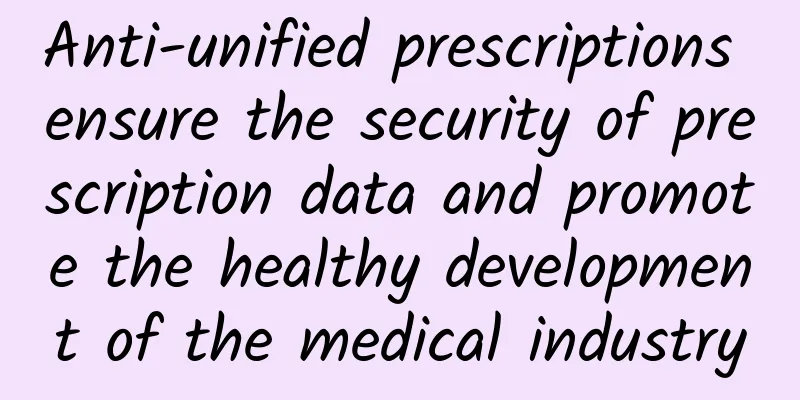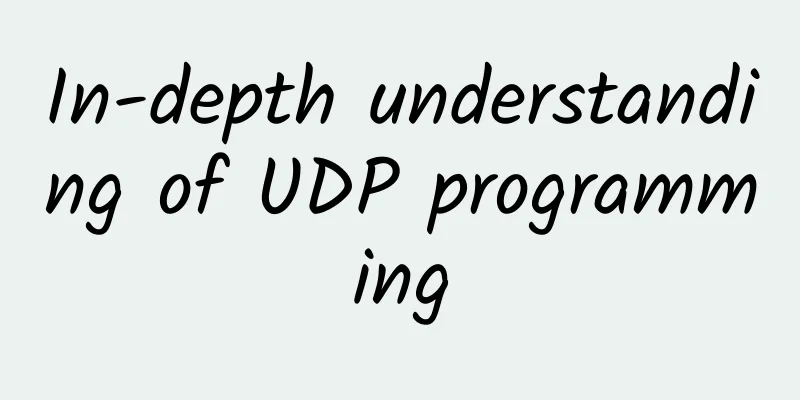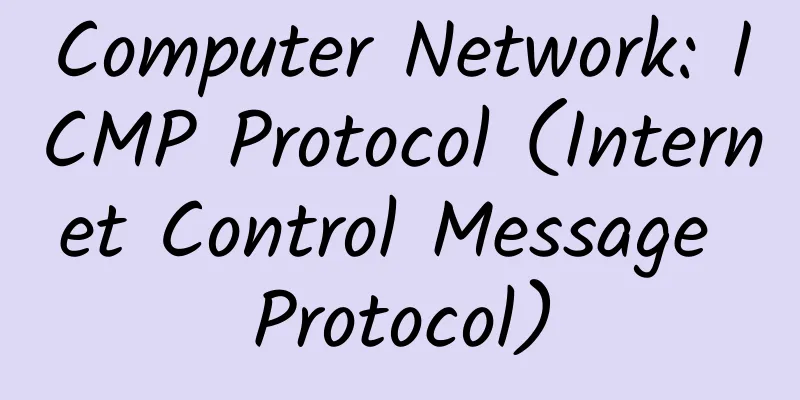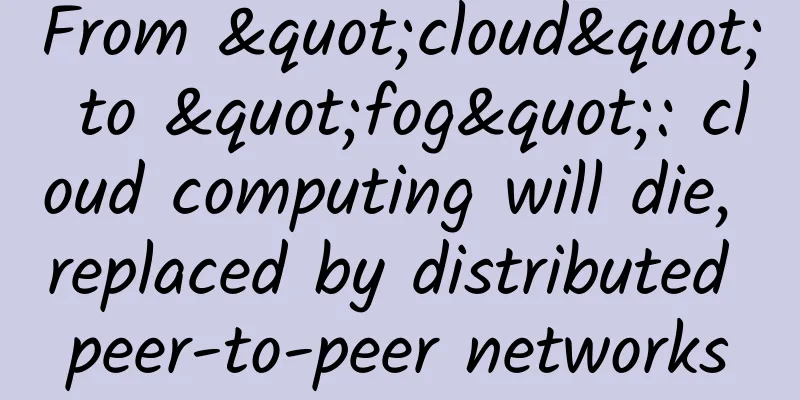Anti-unified prescriptions ensure the security of prescription data and promote the healthy development of the medical industry

|
Hospitals can be said to be places closely related to human beings. Headaches, fevers, pregnancy, childbirth, and physical examinations are all inseparable from hospitals. Hospitals can also be said to be places full of hope and despair. In the eyes of patients who are eager for treatment, hospitals are places of light and expectation. At the same time, hospitals also carry the hopes of too many people. Even a little mistake may bring despair to a family. What hospitals can do is to do their best to treat. But just as there are always places where the sun does not shine in the world, the medical system also has loopholes. When criminals rely on loopholes to make profits, what should hospitals do to effectively prevent the behavior of criminals? "Security risks" faced by medical informationization With the development of the information age, the degree of medical informationization is getting higher and higher. Many tertiary hospitals in Beijing have realized various ways such as self-registration, self-payment, WeChat appointment, APP appointment, etc., which makes the information system more and more huge. However, there are great risks in the data on the Internet. If the supervision is not strong, there is a great probability that data will be leaked, allowing criminals to make profits from it. Before the medical reform, if criminals wanted to obtain sensitive medical information, they had to spend a lot of time and money to record and summarize it. After the reform, the data entered into the database facilitated patients' medical treatment, but it also facilitated criminals to obtain illegal information, and through illegal means, they obtained information on the amount of drugs and medical consumables used by medical institutions, departments and medical personnel. For this reason, the National Health and Family Planning Commission required the implementation of anti-unified prescription management from January 1, 2015. "Anti-unified prescription" means taking certain measures, including administrative, institutional, and technical measures. The technical means here refer to the anti-unified prescription system, which uses technical means to prevent and audit illegal unified prescriptions. Functions that the anti-unification system should have Before the emergence of the anti-prescription system, hospitals' means of preventing prescription fraud were limited to relying on employees' professional ethics and setting limits through authority. This constraint was not very effective, and the lack of technical supervision also led to prescription fraud incidents. The hospital's HIS and other medical systems contain various information about the hospital and support the operation of the hospital. The anti-prescription system should be connected to the HIS system and monitor the prescription data of the HIS system 24 hours a day. Once there is any illegal prescription data, the system will record information including the user, address, procedure, and operation content, restore the specific prescription data operation, and trigger an alarm to notify the relevant supervisory personnel. In addition to solving the above problems, the anti-prescription system should also have a data restoration function. When criminals operate on the data, it can effectively reject and restore it to the data before the operation. When data is deleted by mistake or the system fails, it can be restored to the normal data closest to the failure time to ensure the accuracy of medical data. In addition, the anti-prescription system should also have the function of accurate behavior tracing. When there is a problem in the medical field, the anti-prescription system can trace back based on the data, visualize the user's access request and the response received, and accurately find the cause, nature, and behavior of the problem. In addition, with the demand for anti-prescription, the market demand is huge and many hospitals need to install it, which has also spawned a number of start-ups. However, the anti-prescription software they developed has a short development time and design defects, resulting in various forms of backdoor vulnerabilities, which has lost the true meaning of anti-prescription. The importance of anti-prescription system to the medical industry In order to ensure the healthy development of the medical industry, Donghua Net Intelligence has combined its years of experience in protecting sensitive information in the medical industry and launched the Donghua Anti-Unified Prescription System. The Donghua Anti-Unified Prescription System has a built-in professional terminology library that can correctly explain unified prescription operation behaviors. It can also conduct two-way audits on all activities of the medical system, such as users, time, operations, etc., accurately restore user access behaviors, and use unique technology to visualize and restore doctor access requests and responses, record user behaviors in detail, and effectively prevent illegal use of database information for "unified prescriptions", leakage of medical and patient data, and unauthorized tampering of hospital and patient information data. The Donghua Anti-Prescription System is independently deployed in the network in a bypass manner. This access method basically does not affect the link status, and the deployment is simple, fast, and very safe. The most important thing is that the Donghua Anti-Prescription Equipment also has a data restoration function. When data is deleted by mistake or the system fails, it can be restored to the normal data closest to the failure time, ensuring the accuracy of medical data, and even tracing back the data when the prescription is leaked. Flexible deployment methods Donghua's anti-unified prescription system also has the functions of in-depth detection, real-time monitoring, precise tracing, and intelligent analysis, which can effectively solve the crisis faced by the medical system and prevent the leakage of sensitive information. Now many senior hospitals in China have used Donghua's anti-unified prescription system to help hospitals solve the problem of "unified prescription", effectively prevent illegal use of database information to violate "unified prescription", prevent the leakage of medical and patient data and unauthorized tampering of hospital information data, and promote the healthy development of the medical industry! Specifications of Donghua Network Intelligent Anti-Unification System |
<<: Donghua's anti-unified prescription system helps hospitals develop an "indestructible body"
>>: The difference between SDN and traditional network operation and maintenance
Recommend
5G popularization is further promoted, and 5G messaging may be commercially available in mid-to-late October
[[426636]] At the 5G Message High-level Forum of ...
RAKsmart: Cloud servers starting from $1.99/month, VPS hosting starting from $0.99/month, data centers in Hong Kong/Japan/Singapore/Korea/USA
RAKsmart is a hosting company founded by overseas...
Why do you need to consider whether IPv6 is supported when adopting SD-WAN?
The Internet of Things (IoT) has fundamentally ch...
3 Types of Wireless Network Site Surveys and How to Perform Them
Designing and maintaining a network is complex, b...
Are blockchain and IoT a match made in heaven?
The Internet of Things (IoT) market is on an upwa...
Why are 5G private networks favored by countries with developed manufacturing industries?
Currently, private networks are increasingly used...
Finally! Huawei officially announced that it will start collecting 5G patent fees, Apple and Samsung will have to pay...
Yesterday (March 16), Huawei stated at the "...
In the 5G era, what else can we sell besides traffic?
According to official news, 5G will be put into c...
Catch it all - Webpack project packaging 1
[[427986]] This article is reprinted from the WeC...
DMIT.IO Christmas recharge/renewal rebate, high-defense CN2 GIA line VPS 20% off
DMIT.io has launched a Christmas promotion, inclu...
5G development has achieved remarkable results, and the number of terminal connections has exceeded 100 million
On the afternoon of September 22, the State Counc...
Cybersecurity risks of smart devices
Many people don’t consider the risks that smart d...
Four types of network monitoring
Network monitoring can take many forms, depending...
Cisco Chairman and CEO Chuck Robbins delivered a speech at the China Development Forum 2020: Innovation and cooperation promote prosperity and development
On November 11, 2020, the 2020 China Development ...
What happens when you enter a URL in your browser (Part 4): Network packets are transmitted in a LAN - how routers and switches forward packets
In the previous section, we introduced how networ...









